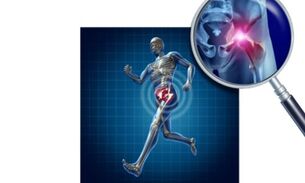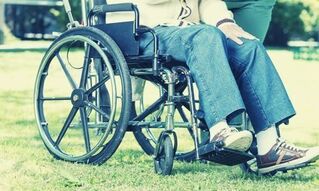
Osteoarthritis of the hip joints is one of the money-making dystrophic pathologies of the musculoskeletal system. The disease leads to a rapid decrease in motor activity, a change in the nature of a person's movements, often - the impossibility of independent movement and disability. Decades ago, coxarthrosis was considered one of the "diseases of old age, " but since the beginning of this century, a high incidence of various causes has been reported among young and middle-aged patients.
Statistics
Osteoarthritis is the most common pathology of the musculoskeletal system and occurs in 70% of adults; coxarthrosis - in 25% of patients with orthopedic profile. Up to 30% of patients diagnosed with coxarthrosis become disabled, become disabled, and require joint replacement surgery.
The disease begins at the age of 20-25 years, the average age of onset of symptoms is 37-39 years, progresses with age, which is associated with the presence of pathologies of the musculoskeletal system, bone loss, etc. is related to. The prevalence of coxarthrosis in middle-aged patients is 11%, in people over 85 years - 35%. Coxarthrosis in children and adolescents is the result of congenital joint dysplasia observed in 1% of newborns.
developmental reasons
The causes of osteoarthritis of the hip joint have different meanings depending on the age and general health of each patient:
- Congenital disorders of the normal anatomical shape of the joints - deformities of the femoral neck, congenital dislocation of the thigh;
- deformity of the femoral head due to dystrophic (age-related) processes in the joint;
- traumatic injuries - fractures, dislocations, non-physiological, including sports, loads on the joints;
- infectious and inflammatory diseases - tuberculosis, osteomyelitis and others;
- rheumatoid arthritis and other systemic diseases (allergic, metabolic);
- If the exact cause of the disease has not been determined and has developed itself, the term "idiopathic coxarthrosis" is used.

Symptoms of coxarthrosis of the hip joint
Pain is the main symptom. Their severity and the addition of other manifestations of coxarthrosis depend on many factors, especially body weight, lifestyle and age. In the initial stage, patients report a moderate, intermittent pain in the hip joints, which occurs mainly during physical exertion and passes spontaneously. Then the pain begins with light loads, does not go at rest, "shoot" in the knee joint. The mobility of the joint or both joints is limited.
Patients are forced to limit physical activity, lameness, "duck walking" appears. In the last stage, unbearable constant pain is observed, mobility in the hip joints is severely limited, walking is possible only with a stick or crutch, patients need help day and night, the disabled.
development
As the disease progresses, the hip joint gradually collapses and loses its function completely.
There is a thinning of the joint cartilage and a slight narrowing of the joint space. The bone tissue under the cartilage becomes denser. At this stage, pain appears after physical exertion.
In the second stage, the destruction of cartilage progresses. Marginal osteophytes appear - bone growths. The narrowing of the joint space progresses. Pain occurs during walking, limitation of joint mobility (contracture).
In the final stage of coxarthrosis, bone growth is extensive, flattening and subluxation of the femoral head occurs, and the joint space is practically absent. Constant severe pain, joint mobility is significantly limited.

Diagnosis of coxarthrosis
If you experience pain in the groin area, limited joint mobility, and other symptoms listed above, you can consult a therapist, but the leading medical professional who diagnoses and treats osteoarthritis of the hip joint is an orthopedic traumatologist.
The main method for the diagnosis of coxarthrosis is radiography. This is an informative method that allows accurate assessment of structural changes in the affected joints. Due to its cost-effectiveness and affordability, combined radiography is still widely used. X-ray computed tomography is a more informed (but expensive) method. Magnetic resonance imaging (MRI) of the joints is also used. X-rays are performed at the pre-X-ray stage (if there are still no changes in the X-rays) for the detection and differential diagnosis of coxarthrosis.
Treatment of coxarthrosis of the hip joint
In the early stages of coxarthrosis, conservative methods of physiotherapy, including kinesiotherapy, massage and physiotherapy, especially water and mud therapy, which is a complex of physiotherapy, are preferred with a favorable course of the disease. Magnetotherapy can also be chosen among the well-proven physiotherapy methods.
Magnetic therapy for coxarthrosis is used for various purposes. Under the influence of a magnetic field in the body, regenerative processes are activated, including in bone tissue, and blood circulation improves. The latter point is especially important because in osteoarthritis, not enough blood is supplied to the joints, and therefore there is a lack of nutrients to maintain the normal state of cartilage and bone tissue, which can aggravate pathological changes in the joint. Improving blood circulation in the area of the hip joints helps to restore the necessary nutrient flow to the joints, activates metabolism in bone and cartilage tissue, which is the basis of the positive effect of magnetotherapy in coxarthrosis.
In addition, the anti-inflammatory and analgesic effect of magnetotherapy is observed due to the strengthening of metabolic processes and the release of some biologically active substances.

Diet therapy is recommended to normalize metabolism and reduce body weight. In addition to a rational diet, it is possible to use excipients (drugs and biologically active pharmaceutical additives) that affect the metabolic and recovery processes in the musculoskeletal system - glucosamine and chondroitin (chondroprotectors), minerals and vitamins, standardized plant extracts.
Drugs with anesthetic and anti-inflammatory effects, ie NSAIDs, GCS, muscle relaxants and others, are used in all stages of coxarthrosis to relieve pain and inflammation. Their use should be strictly dosed under the supervision and supervision of a physician.
In the second or third stage of the disease, it is recommended to continue conservative treatment or surgery, depending on the symptoms and the patient's condition. Currently, various surgical methods are used, the best results (complete restoration of joint function and human mobility) are obtained by total arthroplasty - replacement of the hip joint.
In both surgical and conservative approaches, drug treatment, diet therapy and lifestyle changes, physiotherapy and spa treatments are recommended. Physiotherapy in complex therapy can reduce the amount of medication and the load on the body, provide faster recovery after surgery and improve the overall condition of the patient. Magnetotherapy is particularly effective and tolerable in debilitated elderly patients and in people with chronic diseases of the nervous and cardiovascular systems.

Prevention of osteoarthritis of the hip joint
As a preventive measure, early detection of coxarthrosis is very important. If you find symptoms (pain, limited mobility) in the region of the hip joints, you should consult a doctor - first a therapist, then you can definitely visit an orthopedic surgeon. The therapist may prescribe initial pain treatment, recommend chondroprotectors, and the orthopedist will prescribe specific treatment.
Weight loss and lack of normal physical activity, improvement of working conditions and lifestyle in general, as well as timely treatment of diseases that can be one of the causes of coxarthrosis (inflammatory, infectious diseases of the joints, congenital defects of the joints, degenerative) dystrophic diseases).





































